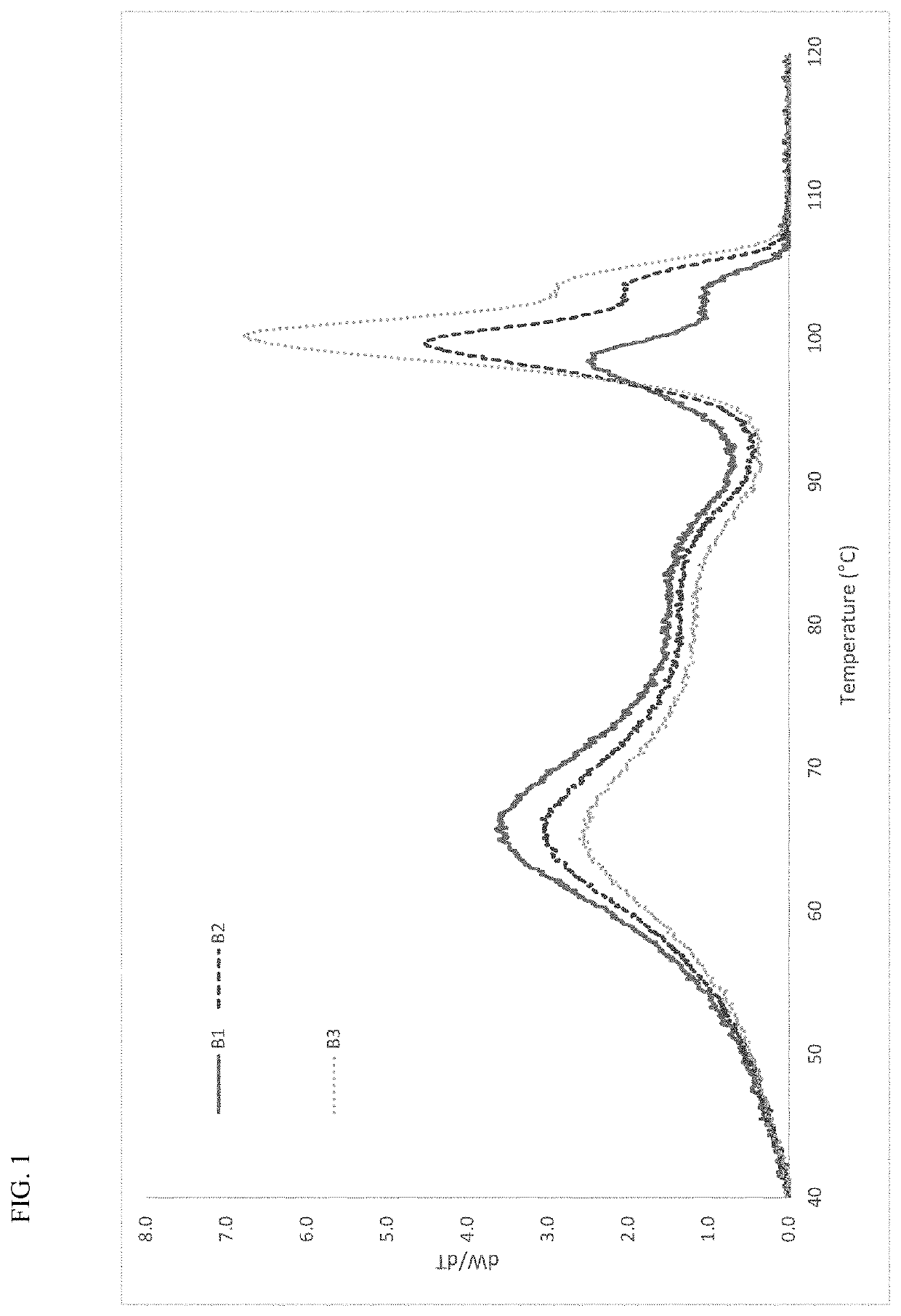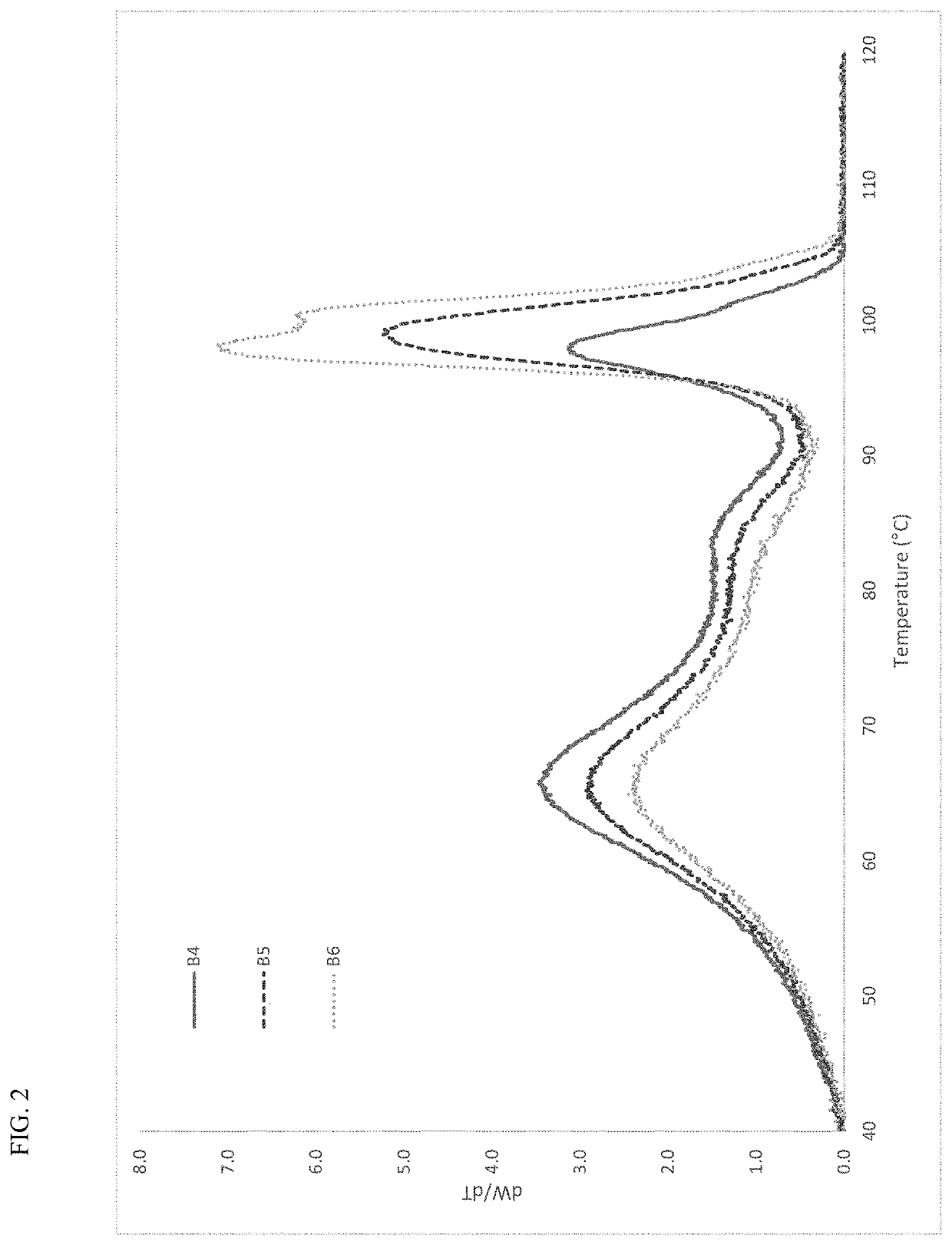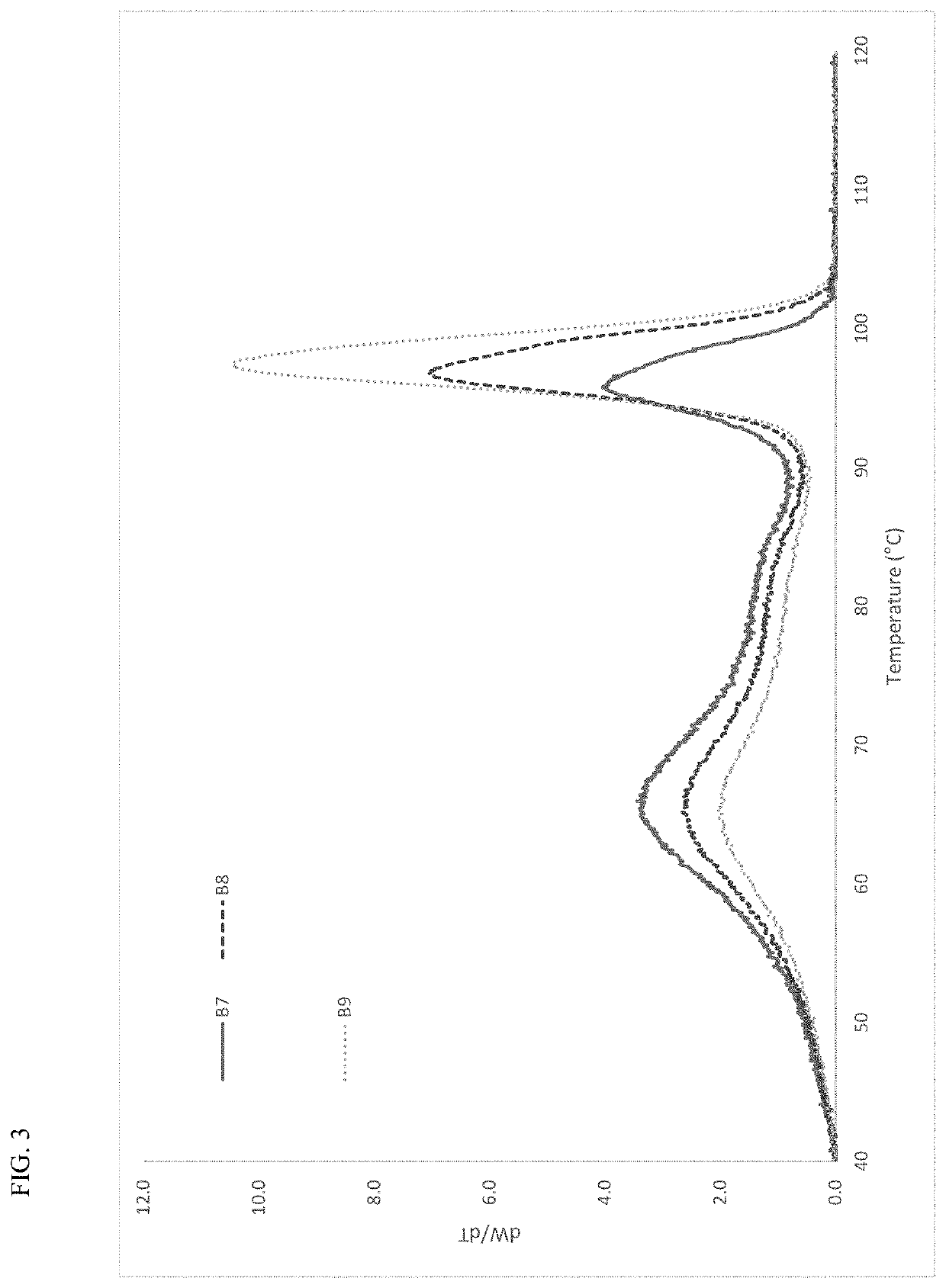Dual Component LLDPE Copolymers with Improved Impact and Tear Resistance, and Methods of Their Preparation
- Summary
- Abstract
- Description
- Claims
- Application Information
AI Technical Summary
Benefits of technology
Problems solved by technology
Method used
Image
Examples
examples
[0086]The invention is further illustrated by the following examples, which are not to be construed in any way as imposing limitations to the scope of this invention. Various other aspects, embodiments, modifications, and equivalents thereof which, after reading the description herein, may suggest themselves to one of ordinary skill in the art without departing from the spirit of the present invention or the scope of the appended claims.
[0087]Melt index (MI, g / 10 min) was determined in accordance with ASTM D1238 at 190° C. with a 2,160 gram weight, and high load melt index (HLMI, g / 10 min) was determined in accordance with ASTM D1238 at 190° C. with a 21,600 gram weight. Density was determined in grams per cubic centimeter (g / cm3) on a compression molded sample, cooled at 15° C. per hour, and conditioned for 40 hours at room temperature in accordance with ASTM D1505 and ASTM D4703.
[0088]Molecular weights and molecular weight distributions were obtained using a PL-GPC 220 (Polymer La...
examples 1-19
[0103]Low density polymer components (ethylene / 1-hexene copolymers) were melt blended with high density polymer components (ethylene / 1-hexene copolymers or ethylene homopolymers) to produce Blend Examples B1-B19. The properties of the respective low density polymer components (LD 1 to LD 3) and high density polymer components (HD 1 to HD 4) are summarized in Table I. These polymer components were produced using zirconium-based metallocene catalyst systems (homogeneously-branched polymer components). The polymer properties of LD 2 were very similar to LD 3, with the exception of the slightly higher melt index and lower density. The relative amounts of the low and high density components used in Blend Examples B1-B19 are summarized in Table II, and the properties of the blend compositions are summarized in Table III.
[0104]The blend compositions were produced using a ZSK-40 twin screw extruder with a 30″ screw length. The heating and screw speed were adjusted to obtain a melt temperatu...
PUM
| Property | Measurement | Unit |
|---|---|---|
| Temperature | aaaaa | aaaaa |
| Temperature | aaaaa | aaaaa |
| Temperature | aaaaa | aaaaa |
Abstract
Description
Claims
Application Information
 Login to View More
Login to View More - R&D
- Intellectual Property
- Life Sciences
- Materials
- Tech Scout
- Unparalleled Data Quality
- Higher Quality Content
- 60% Fewer Hallucinations
Browse by: Latest US Patents, China's latest patents, Technical Efficacy Thesaurus, Application Domain, Technology Topic, Popular Technical Reports.
© 2025 PatSnap. All rights reserved.Legal|Privacy policy|Modern Slavery Act Transparency Statement|Sitemap|About US| Contact US: help@patsnap.com



